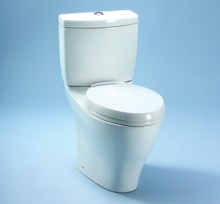Fecal Transplants Promising for Treating Intestinal Issues, Still Fecal Transplants

Basically, a fecal transplant is performed by taking stool from a healthy person, diluting it, and — there’s really not a better word for this — “squirting” it into the recipient’s colon. This process has been performed on a number of patients on a number of different occasions and worked, so there is a decent catalog of anecdotal evidence that the procedure can alleviate symptoms like chronic diarrhea almost immediately. The main problem that’s preventing the procedure from gaining more traction is largely a technical one. It turns out that “feces” don’t fit any of the FDA’s established classifications, so it’s very difficult to figure out how to go about clinical testing or widespread adoption.
What that means for the people who might benefit from this is that many doctors don’t do the procedure, and no insurance companies will cover it. There are, however, doctors who are strong supporters of the fecal transplant and will perform one, or try and help the patient find a way to do it themselves. Michael Sliverman of the University of Toronto, for example, suggested that patients could relatively easily perform a transplant themselves by using an enema kit.
Even when the procedure is performed by a doctor, the patient plays a pretty big part. One of the most important steps for the patient is simply getting over the squick factor. Of course, these individuals have often been living with digestive problems for years, so they might be more willing to receive a stool transplant from another person than, say, you or me.
If they can get over that hurdle, they are also generally expected to find their own donor, and they usually want to. Fortunately, it doesn’t take much for a stool transplant to be compatable, and it’s not like the donor will be giving up anything particularly valuable like an organ. Most patients who undergo this procedure turn to a child, sibling, parent or spouse. “For me, it’s aesthetic,” says Christina Surawicz, University of Washington professor of medicine. She’s done the procedure over 20 times, and published an account of the first 19.
“There’s something very intimate about putting someone else’s stool in your colon, and you are already intimate with a spouse.”
Unfortunately, while anecdotal evidence is heartening, it’s not clinical evidence, and clinical evidence is what the FDA really wants. Hopefully, the feces classification issue is something that can eventually be cleared up so that it can happen. Fortunately enough, for the afflicted who can make their peace with a feces transplant and decide to try it, the cost, stakes, and expertise needed are low enough that they can probably find someone to do it, or find a way to do it themselves and attempt to allievate their chronic symptoms. Whatever the future of fecal transplants may be, I can tell you this much: They will always be pretty gross.
(Scientific American via BoingBoing)
- Japanese poop meat
- Panda poop makes for expensive tea, apparently
- AshPoopie: The pooper scooper with a built in incinerator
Have a tip we should know? tips@themarysue.com